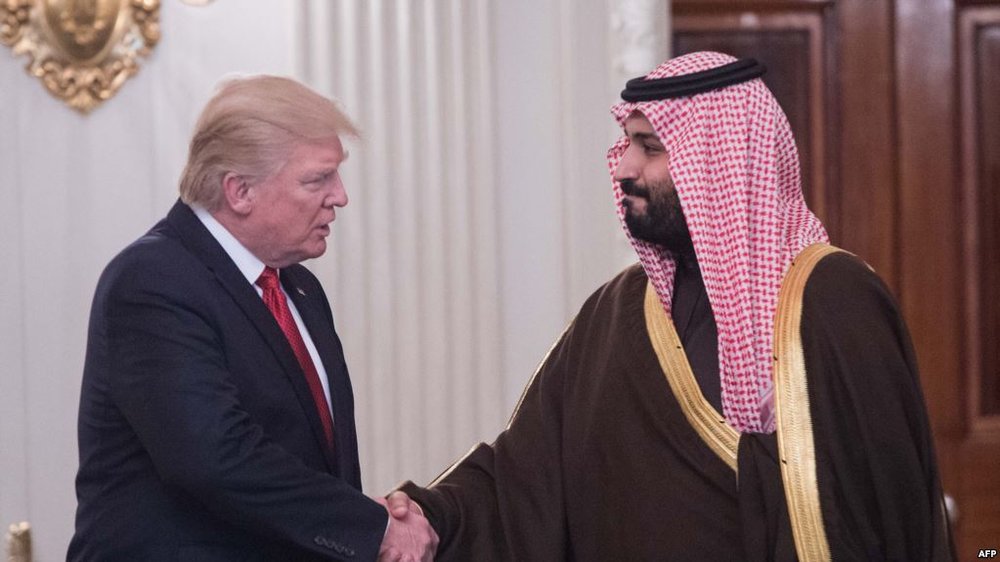Trump's attachment to ISIL and right wing extremism: A conflict managed by Washington

TEHRAN - The radical right-wing movement, with its racist and nationalistic approach, is now finding more and more power in Europe. The confrontation with multicultural societies in Europe and the United States is one of the main goals of the leaders of the right-extremist movements in the West.
For the first time, during the 2016 presidential competition in the United States, Donald Trump could convince the majority of racists, nationalists and opponents of the multicultural society to take part in the elections and vote for him. On the other hand, the President of the United States, after his presence at the White House, reinforced Obama's approach in supporting terrorist and Takfiri groups in the region.
The U.S. coalition's attacks on popular forces in Iraq, or the bombing of Syrian armed forces in Deir-ez-Zor, showed that Washington is opposed to any attempt to completely eliminate Takfiri groups in West Asia. Indeed, what is Trump's goal of "protecting the Takfiri threat" in West Asia and in the international system?
On the other hand, how can the interdependence of the European radical right currents and the White House leaders be interpreted? Here are some points that should be carefully considered:
"Marine Le Pen", the most prominent figure in the right-wing extremism in Europe, supported Trumpduring the 2016 presidential election. Other nationalist and right-wing extremist leaders in Europe, against the politicians affiliated with the middle and left-wing currents, announced their support for the controversial nominee of the last year's electoral campaign in the United States.
Trump's "supporting approach in the economic arena," "opposition to the existence of the European Union", his "strict Atlantic approach within NATO" and "opposition to multicultural societies" were among the factors that attracted the attention of Europe's extremists to Trump.
Given the direct and comprehensive influence of U.S. developments on the United Europe (as seen in the wake of the 2006 economic crisis), far-right extremists hope that domination of the nationalist and anti-immigration trends in the United States will lead to mutually reinforcing trends in the EU and the Eurozone. So, the European extremists are seeing Trump's presence at the White House as a golden opportunity to expand their power.
Donald Trump and his companions highly "affect" and "are affected" by theright extremism in Europe. In other words, Trump seriously needs the right extremism and its social and political power to "restrain the United Europe through the revival of nationalism".
The President of the United States is well aware that one of the prerequisites for the "revival of America's economical superiority" is the maximum removal or suppression of Washington's commercial rivals in the international system, and the European Union along with China, are considered America's main rivals in this equation.
On the other hand, Trump knows well that the strengthening of the right-wing extremist currents and the emergence of nationalism in European societies means the collapse of the European Union and the Eurozone.From the very beginning of his presence at the White House, Trump officially supported the far-right movements within the EU and the Eurozone.
Even in a controversial interview, Trump stated that "Brexit" should be taken as a model for other European countries, and that this will happen in other EU countriessooner or later. Although Trump's statements were accompanied by the negative reaction of European leaders, including "Angela Merkel" and "Jean-Claude Juncker", the President of the United States attained his goal in this regard.
Right now the extremist right movements have won important victories in the European countries' parliaments. In the 2017 general election in Germany, the Alternative for Germany (AFD) was the first to enter the country's parliament (Bundestag) with more than 12% of the vote. The AFD has now become the third strongest party in the country (after the two Christian and Social Democratic parties).
In Austria, the Freedom Party (FOP) was able to join the body of the Austrian coalition government after a gigantic victory in the general election. In Sweden (as the main symbol of a multicultural community in Europe), surveys show that the far-right parties have attracted a large number of citizens.
According to the latest polls, the Democratic Party of Sweden (far-right nationalism) has become the first and most popular party in the country with about 25 percent of the vote. In other European countries such as France, Italy and the Netherlands, the right-wing extremism continues to grow under the support of the new government in the United States.
Donald Trump finds that the key to reinforce right-wing radicalism in the West, is to keep the "ISIL threat" and other Takfiri groups alive within the borders of the European Union. Therefore, the White House is seeking to "manage" ISIL in both intellectual and operational spheres instead of "destroying" it. In other words, the "ISIL destruction strategy" is not basically defined in U.S. foreign policy.
As news sources in the West acknowledge, during the liberation of Raqa, hundreds of ISIL members, along with their families and under the protection of coalition forces (managed by the United States), easily left the city and were scattered elsewhere in Syria. Undoubtedly, this targeted action has been taken to "revive Takfiri terrorism" after the dissolution of the ISIL caliphate.
Trump, with a calculation based on cause and result, rightly believe that the "Takfiri thinking" and "far-right radical thinking in the West" feed on each other and work as mutual reinforcing factors. Hence, he intends to manage these two extremist currents simultaneously so that he can provide the ground to carry out his political and economic plans.
